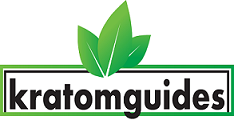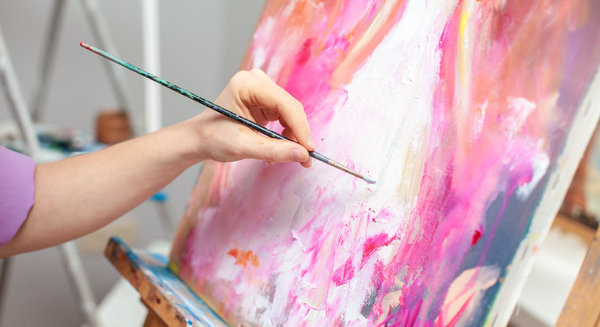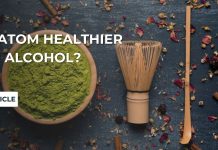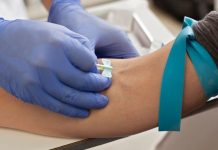“A picture is a thousand words, and actions speak louder than words.”
In this age, when drug addiction and vulnerability of individuals of all ages have become a threat to numerous societies, isn’t it better to use actions and pictures to liberate feelings rather than sitting and talking with an individual who needs to express their thoughts?
We are surrounded by several vices that are not just addictions but become tools of destruction for individuals as well as their families. Alcohol and drugs of all degrees are easily accessible and became an escape for millions of people in the past like they destroy a more significant number today.
Rehabilitation and restoration of self-esteem is an ordeal that many drug addicts cannot bear. The regular and strict rehabilitation process often makes these addicts weaker and susceptible to return to their drug consumption.
However, as the ways of drug addiction recovery are changing, so is the rehabilitation process. Instead of turning to dire solutions, research suggests art as an effective way of returning to life.
Alcohol and drugs affect people of all ages, intelligence levels, and backgrounds. The road to addiction recovery is not a “one size fits all” approach to treatment is no longer considered as useful. The goal of rehabilitation centres is to provide a diverse program that allows for a higher chance of a well-rounded recovery. Incorporating art therapy helps users find their way out of addiction.
Why Art Therapy Is Used in Addiction Recovery?
Art therapy is the much-needed change in rehabilitation. You can say it is a lighter note to the difficult situations that people try to deal with. Art therapy can be simply called the application of the visual arts for therapeutic purposes. It not only addresses mental, emotional, and even physical needs through the creative process but also gives hope to the addicts who see their worth through the work they produce.
Researchers and doctors have resorted to this unconventional way of rehabilitation in both paid and free drugs rehabilitation center information at Addictionresource to tackle the issues that can’t be successfully managed during traditional sessions. The conventional methods of addiction recovery may not appeal to every soul. They might not be instrumental in removing the scars of mental and physical abuse in the addicts, who turned to escape because their realities were bitter.
For recovering addicts, discussing traumatic situations (like sexual or physical abuse) and verbalizing their feelings can be very difficult. It is especially true for those who have some underlying mental health condition or impaired communication and social skills due to long-term substance abuse.
The clients at these rehabilitation centres enjoy art therapies, and gradually, it becomes the escape they needed from their dilapidated and destroyed self-image. They find it a relaxing and more natural way to address the most complex themes and conflicts.
Art is primarily a non-verbal process. Participants have an opportunity to express their thoughts and emotions that they cannot put in words. These therapy sessions allow exploring, understanding and resolving issues they may feel uncomfortable talking about in traditional talk sessions.
What Does Art Therapy Look Like?
An art therapy session for rehabilitation can be like an art class where every student is given a canvas to use colours to express their thoughts. Without much thinking, some drug addicts have been able to depict their most profound reflections on paper for the world to see how they reveal their inner self!
A teacher may be present to guide them about the material to be used or the dimension to be followed, but the artwork is purely the work of the ‘artist’. The rehabilitation centre, or what we called the class, has a therapist in place of a teacher and he or she can encourage the participants to adequately express themselves through the creative, non-verbal, and imaginative exercise.
This art therapy session can be modified to suit the drug addicts or clients of the rehabilitation centre. Each class can be organized as group sessions to include several people who have had similar journeys. These group sessions can build strong support groups for every participant.
All drug addicts bond well with those whom they think can easily understand them. Seeing each other prosper in class can encourage those who take the back seat or are reluctant to let it out. Individuals in the art therapy session are not artists; neither are they trained to create masterpieces. However, to make oneself open to the experience and be active to take advantage of this practice is a requirement.
The licensed therapists work in coordination and understand the pace of each individual. These therapists know medicine, psychology, visual arts, education and social work. The therapist’s goal is to foster the client’s engagement in the arts and their creativity and support the pace of addiction recovery. Also, the therapist builds trust and strong relationships with their clients that set a healthy precedent for the drug addicts to open up to other people in their lives as well.
Rehabilitation art therapy can involve several activities:
Visual and Fine Art:
- Drawing
- Painting
- Collaging
- Cut-paper art
- Sculpting
Performance Arts:
- Dancing
- Playing a musical instrument
- Singing
- Acting
Applied Art:
- Cooking
- Jewellery making
- Sewing
- Woodworking
Literature:
- Creative writing
- Journaling
The goal of art therapy sessions for people abused by drugs is to find a useful mode of communication to release their closing thoughts and emotions and liberate themselves from the feeling of captivity that makes them vulnerable.
What are the Benefits of Art Therapy Activities for Addiction Recovery?
Research shows that art therapy was a positive change for addicts in rehab facilities. The results of some studies are mentioned in “The International Encyclopedia of Rehabilitation” and the “BMC Psychiatry” journal, which emphasizes on the importance of art as a medium of providing freedom and self-confidence to the people who have been a victim of drug addiction.
Art therapy is used as a complementary method in free substance abuse programs. In combination with traditional methods, it can be beneficial to clients in the following ways:
Accepting and adjusting to the recovery process
According to the “Art Therapy: Journal of the American Art Therapy Association”, artistic activities can effectively break down resistance to treatment.
Art helps clients remove the guard against society and decrease denial of the fact that they are addicted to a substance. The expression through art lessens the feeling of shame and involves the individuals in the treatment process.
Achieving a sense of self
Practicing art is a way of self-discovery. Drawing a picture, writing a poem, or doing another creative activity helps a person to discover feelings that have been hiding in their subconscious mind. Art therapy is seen as a useful tool for exploring goals, dreams, and ambitions.
Boosting self-esteem
The creation of a piece of art gives a feeling of accomplishment. This can contribute to the improvement in self-esteem and self-confidence.
Giving emotional release
Overcoming anxiety, depression or emotional trauma can cause mental and physical stress. Participation in some form of art therapy gives a healthy outlet for expressing and letting go of traumatic memories, negative feelings, painful emotions, and fears. It allows relieving stress and relaxing mind and body.
Promoting cognitive development
Substance abuse takes its toll on the brain. But art therapy helps to repair cognitive damage partly.
Providing an alternative outlet for communication
Substance use is strongly associated with levels of physical, sexual, and emotional abuse as well as a current posttraumatic stress disorder. Often, it leads to alcohol or drug abuse and addiction.
People in recovery don’t want to speak about it aloud. Artistic expression allows them to process and share aspects of their experiences in a way they find safer and less intimidating. That’s why art therapy is especially helpful for children, teenagers, and people with communication disorders.
Increasing a sense of control
People often drink alcohol or take drugs to numb intense emotions or flashbacks. By turning to art, they can learn to process rather than avoid their feelings. Expressing them through creative activities can help patients understand that they can healthily manage their emotions.
Enhancing life satisfaction
Art-making contributes to increasing the quality of life due to psychological growth and improved well-being. It motivates people to change. They no longer fear expression; in fact, try to find innovation in what they produce.
If you are looking for an excellent free alcohol rehab or free drug rehab, then pay attention to those facilities that offer a comprehensive addiction recovery program. A combination of traditional and holistic methods can give the best results.
A person who participates in art therapy can discover new connections, meanings, and relationships in a safe, non-judgmental environment. It significantly contributes to the overall personal growth as it affects sensory perceptions, emotions, cognition, movement, and social behaviour.
Cost of art therapy
In the United States, there are numerous centres of neuroscience and mental health institutes that offer art therapy for drug addiction recovery. The average cost of a 60-minute session can be between $120 for individuals and $50 for group sessions.
Booking a session is easy and varies with individual institutes. However, every centre of mental health will ensure a healthy transformation in lesser time than regular rehabilitation.
In the United Kingdom and Europe, there are numerous luxury rehabilitation centres which offer art therapy. Drug addiction is a serious issue to attend therefore the fee of these centres is much higher than the United States.
Some famous art therapy centres in the United States and Europe
We have formulated a brief list of art therapy centres for rehabilitation of drug addicts. This is not a ranking or a recommendation but a list of some names that are more popular than others.
The art therapy facilities at these places are not ranked and therefore individuals will have to search for the best art therapy centre for rehabilitation. The numerous rehabilitation centres also extend art therapy services along with counselling and you will have to conduct research to find the best one.
Here are some names to get you started on the research:
• In Europe:
- Nova Vida Recovery, Portugal.
- Clouds House, UK.
- The Kusnacht Practice, Switzerland.
- Marieva Healthcare, Greece.
- Step One, Spain.
• In the United States
- American Art Therapy Association
- Art Therapy Program, California.
- Art Therapy for Addiction Treatment, Pennsylvania.
- The Tree House Rehab.
Art therapy not covered by medical insurance
Unfortunately, despite a lot of health benefits, art therapy for rehabilitation is not covered by most medical insurance in the United States. There are some insurance companies that might cover treatments or recognize therapists trained especially to help some disorders or health issues.
Individuals seeking therapy will have to check whether their company covers the cost of art therapy. Individuals will have to fund it fully, however, the results are worth the effort and time.
Final Words
Introducing art as freedom and the path to the expression of the deepest, darkest secrets that once haunted an individual, makes them see themselves with the eyes of the society. This practice helps reveal not only good artwork but also individuals that can be an instrumental part of the community. Their contribution begins to look worthy, not to themselves, but those around them as well!








